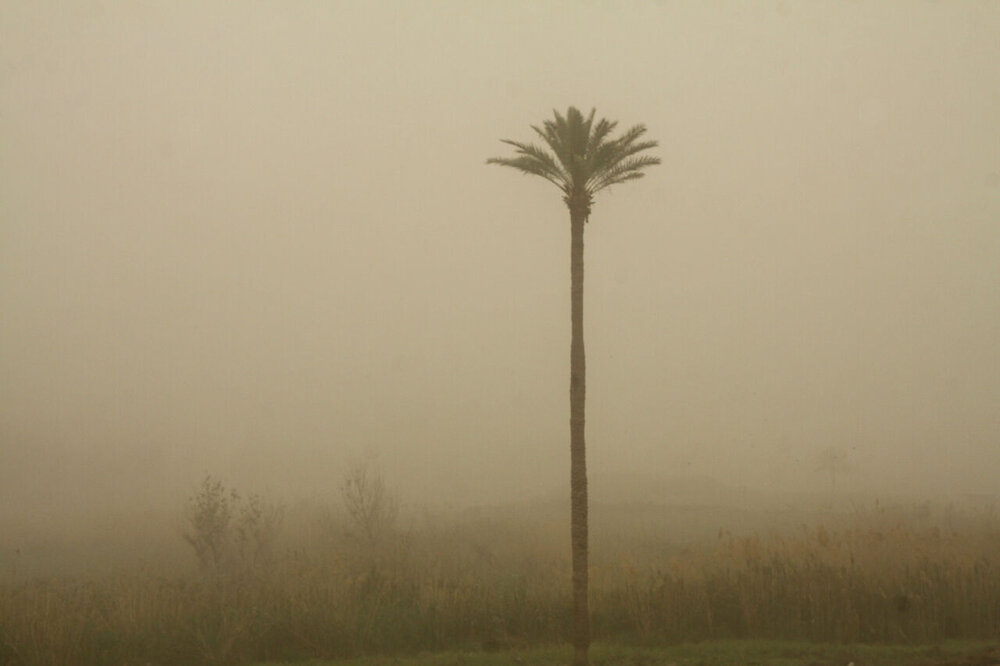Iran, UAE to enhance co-op in dealing with SDSs

TEHRAN – A memorandum of understanding (MOU) will be signed between Iran and the United Arab Emirates with the aim of regional convergence to deal with the phenomenon of sand and dust storms (SDSs).
The MOU will be signed on Tuesday by Ali Salajegheh, the head of the Department of Environment, and Mariam Almheiri, the Minister of Climate Change and Environment of the United Arab Emirates.
Issues such as dealing with sand and dust storms, creating opportunities to exchange information, specialized knowledge, and experiences, implementing joint activities, and developing a regional action plan are foreseen.
Holding joint seminars, training courses, and meetings between experts, and creating a special working group are among the MOU’s goals. Holding joint seminars, training courses and meetings between experts in the field of sand and dust storms, creating a special working group to deal with the effects of SDSs in the region, sharing and exchanging knowledge in the field of management, adaptation, and fighting SDSs in the region and using the experiences of existing international centers for early warning and prediction are other goals of this agreement.
Tehran will host an international meeting on controlling sand and dust storms on July 12, with the presence of the ministers of 12 countries that give rise to the highest amount of dust.
So far, the countries of Iraq, Armenia, Syria, Qatar, Azerbaijan, Oman, and Turkey have announced their readiness to participate in this meeting.
An Iranian delegation, headed by Salajegheh, has embarked on a trip to Iraq, Syria, and Kuwait to resolve the problem of sand and dust storms in June.
SDS effects
The SDSs phenomenon has been plaguing the country for several years and has caused problems in many provinces. According to experts, natural and human factors are involved in the occurrence and severity of this phenomenon which is mainly caused by excessive consumption of water and drying up reservoirs.
Over the past two years, the precipitation rate has been on a downward trend, as a result, sources of sand and dust storms (SDSs) have increased compared to a year before, Ahad Vazifeh, head of the national center for drought and crisis management, has said.
Declining water levels in dams and lakes mean that water available to humans has been reduced and the dust-raising areas have been increased, he lamented, ISNA reported.
The internal dust sources are estimated at 34.6 million hectares, generating an average amount of 4.22 million tons of dust per year, about 1.460 million hectares are dried wetlands.
Some 4.23 million tons of dust are raised per year, which means the loss of soil fertility will hit the agricultural sector.
All the SDSs sources are not located in Iran, 300 million hectares in the neighboring countries are giving rise to SDSs, which transport dust into Iran. The total dust density is estimated at about 150 million tons.
In fact, the dust is raised from Turkmenistan, Uzbekistan, Afghanistan, and Pakistan in the northeast as well as Iraq, Syria, Saudi Arabia, and Jordan in the south, southwest, and west.
Letizia Rossano, the director of the Asian and Pacific Centre for the Development of Disaster Information Management (APDIM), said in June that Iran is really at forefront of understanding the problem of sand and dust storms as well as dealing with it.
More than 80 percent of the entire populations of Turkmenistan, Pakistan, Uzbekistan, Tajikistan, and the Islamic Republic of Iran are exposed to medium and high levels of poor air quality due to sand and dust storms," she noted.
FB/MG
Leave a Comment